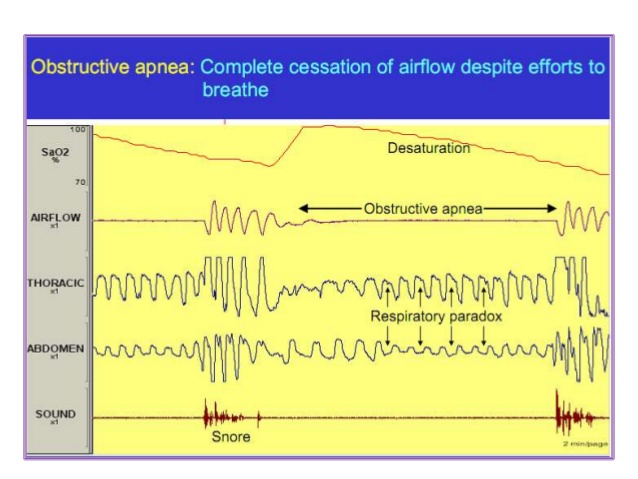
05 Dec Effective Apnoea Hypopnoea Index: A New Measure of Effectiveness for Positive Airway Pressure Therapy
A recent study published in this month’s issue of SLEEP has assessed a new measure of positive airway pressure (PAP) effectiveness, the Effective AHI. An accepted metric to define the effectiveness of PAP for the treatment of obstructive sleep apnoea (OSA) is hours of home use, however this is a surrogate measure as it does not directly assess the apnoea hypopnoea index (AHI). Boyd et al. developed the Effective AHI which accounts for sleep disordered breathing events during the time PAP is and is not being used, to quantify residual disease burden. As the Effective AHI can also be used to assess the effectiveness of any OSA treatment it can facilitate selection of the most effective therapy for a patient.
Positive airway pressure is the accepted first line therapy for patients with OSA and is highly efficacious, however its effectiveness of managing sleep disordered breathing (SDB) is compliance based and dependent on adequate use of the PAP device on a nightly basis in the home setting. It is important to distinguish between treatment efficacy and treatment effectiveness, as the effectiveness of treatment in the real-world setting is a better measure of residual disease burden. When adequate PAP adherence is defined as greater than 4 hours of nightly use, a high proportion of patients with OSA have been reported to be non-adherent to treatment.1 This low partial adherence rate may leave patients exposed to high apnoea/hypopnoea burden with attendant chronic intermittent hypoxia and sleep fragmentation when therapy is not being used. This is of particular concern in patients with severe OSA who are at increased risk for fatal and non-fatal cardiovascular events.1
The researchers developed the Effective AHI to more accurately quantify residual disease burden, as measured by AHI, by equaling the sum of apnoeas and hypopnoeas during the time the patient is using and not using PAP (PAP Off), divided by hours of total sleep time. Two of the specific aims of their research were to measure the Effective AHI in patients with severe OSA who varied widely in adherence to PAP therapy, and determine the optimal level of PAP use necessary to normalise Effective AHI values (AHI<5).
Twenty-eight adult patients (75% men, age 51.4 ± 10.8 years [mean ± SD]) comprised the study sample. The mean Effective AHI of 18.3, was significantly lower than the mean Diagnostic AHI of 67.9 (P < 0.0001). All patients using PAP ≥ 6 h had an Effective AHI < 5. For patients using PAP < 6 h, Effective AHI scores < 5 only occurred in patients who slept in a non-supine position during PAP Off time; leaving 63.6% of patients with residual moderate-to-severe OSA.1
This study concludes that significant disease burden, as objectively measured by the Effective AHI, may still exist in many patients with severe OSA in whom PAP therapy is not utilised for the entire sleep period. Knowledge of true Effective AHI could also provide the treating clinician with a very valuable tool to assess which specific therapy may provide the highest level of control of SDB, as measured by treatment related changes in the AHI. Further studies are needed however to determine how well the Effective AHI predicts important health outcomes such as sleepiness, quality of life, and incidence of cardiovascular events.1
Reference:
- Boyd SB, Upender R, Walters AS, Goodpaster L, Stanley JJ, Wang L, Chandrasekhar R. Effective apnea-hypopnea index (“Effective AHI”): a new measure of effectiveness for positive airway pressure therapy. SLEEP 2016;39(11):1961–1972.

